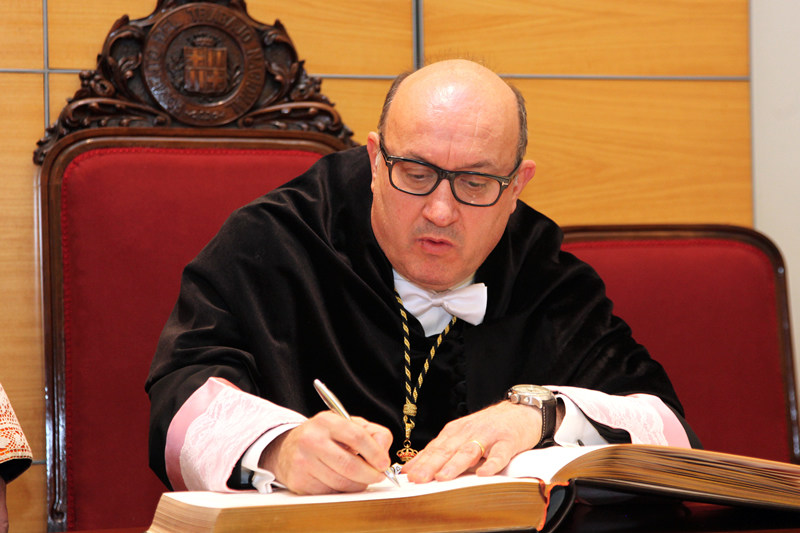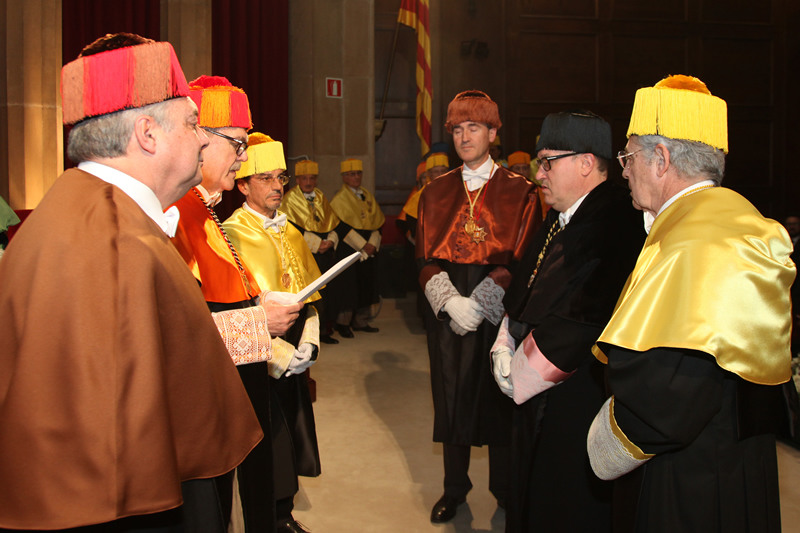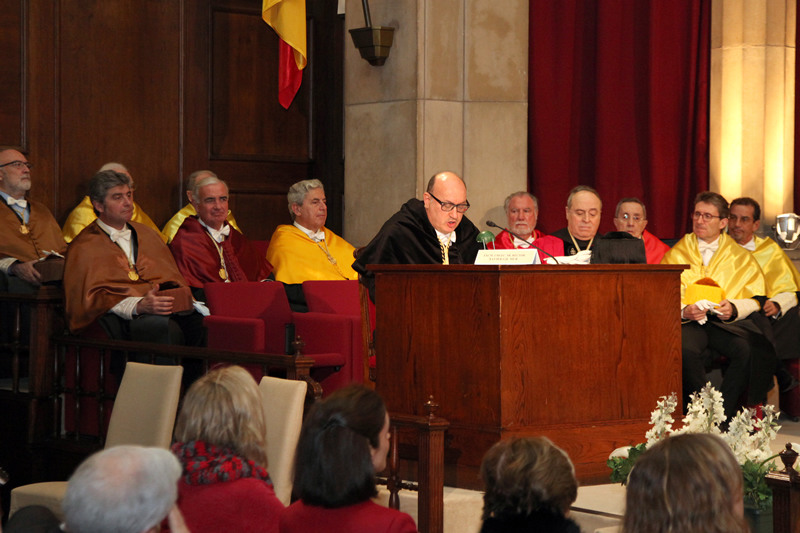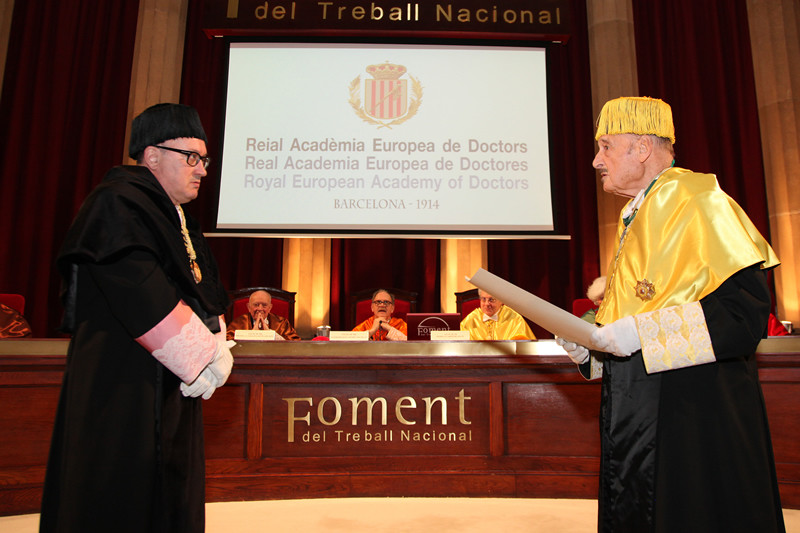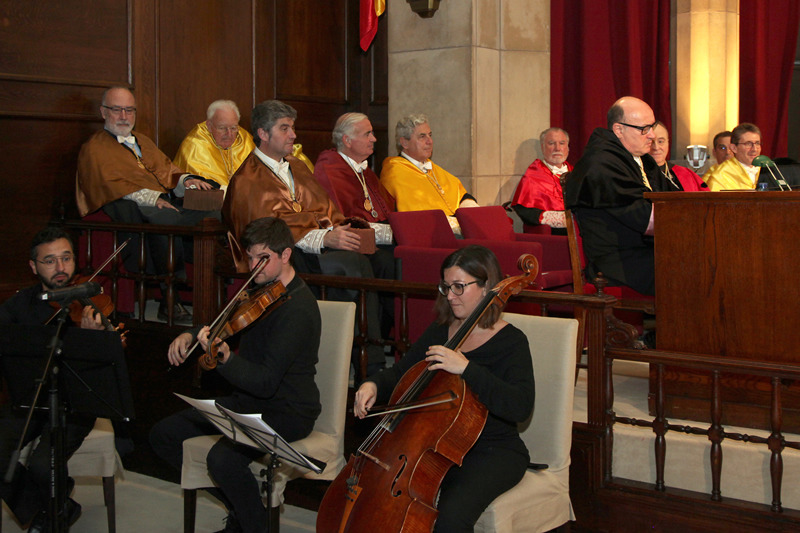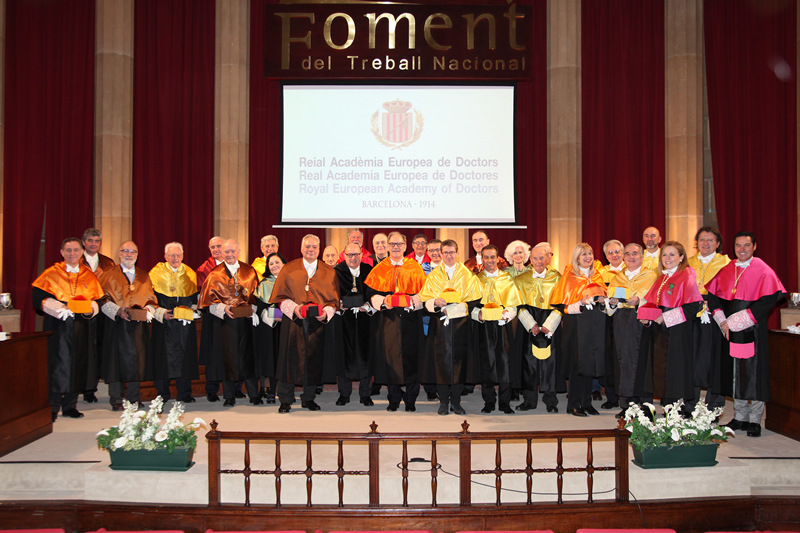Thanks to the latest sensors incorporated, the specialist can know at any time without visiting the patient the state of their implants
Javier Gil Mur, doctor in Chemistry and rector of the International University of Catalonia, has entered at the Royal European Academy of Doctors-Barcelona 1914 (RAED) as full academician during a ceremony that was held in Barcelona on February 6. The recipient has read the admission speech “Avances tecnológicos en implantología oral: hacia los implantes dentales inteligentes” (Technological advances in oral implantology: towards smart dental implants). Full academician Jaime Rodrigo de Larrucea answered on behalf of the RAED.
In a comprehensive approach to the techniques of oral implantology, Gil Mur has reviewed in his speech the characteristics of bone tissue, the techniques of remodelling and repair and introduced in an informative way the concept of osseointegration, the basis of dental implantology. To explain how the macroscopic and dimensional design of the implant is carried out, how the state of the recipient bone is analysed and which are the main surgical techniques. Next, the specialist has reviewed the materials used in implantology, mainly titanium and zirconia, taking into account their mechanical properties, their resistance to corrosion and their biocompatibility. He has also reviewed other bioinert and bioactive materials.
After analysing also the characteristics of the surfaces of the implants and the treatments to achieve surgical success, Gil Mur has not overlooked the problems of the interventions, caused mostly by bacteria. To combat it, he has offered the different strategies of inhibition of bacterial adhesion: the mechanical adjustments in connections of dental implants, the type of dental implant, the biological seal, the anti-adhesive surfaces, the release of drugs, the oxidizing agents and the inorganic substances.
Finally, he has addressed the so-called biofunctionalisation of implants, guaranteeing the success of the intervention. He has listed processes such as surface activation, silanisation, cross-linking and peptide immobilisation. To finish with the analysis of the latest built-in sensors that allow even talking about smart implants, since the specialist can know at any time without visiting the patient the state of their implants.
See the full speech


